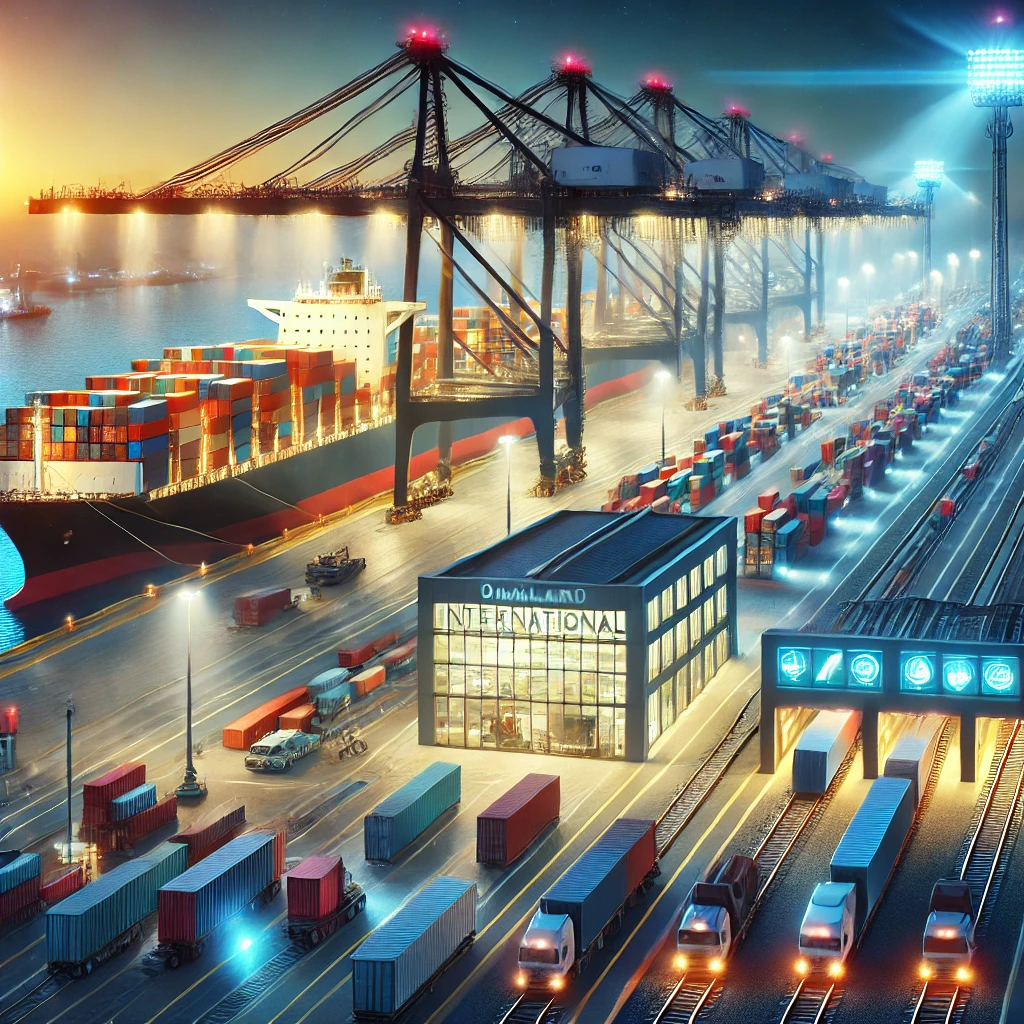The Role of Oakland International Container Terminal in Modern Practices

What Is Oakland International Container Terminal?
Oakland International Container Terminal is the largest and most active terminal at the Port of Oakland, serving as a gateway for international shipments. It facilitates the import and export of goods between the U.S. and major trade partners, including Asia, Europe, and Latin America.
Key Features of OICT:
- 🚢 Large-Scale Operations – Handles millions of TEUs (Twenty-Foot Equivalent Units) annually.
- ⚡ Advanced Terminal Automation – Incorporates automated cranes and container tracking systems.
- 🌍 Strategic Location – Provides direct access to major rail and highway networks.
- 🌱 Sustainability Initiatives – Includes shore power, clean energy equipment, and emissions reduction programs.
- 📡 Real-Time Tracking Systems – Enhances efficiency, visibility, and shipment planning for logistics providers.

Why Is Oakland International Container Terminal Important?
OICT plays a crucial role in international supply chains, providing efficiency, scalability, and connectivity for shippers, freight forwarders, and logistics companies.
1. Trade and Economic Impact
📦 As a major trade hub, OICT connects global markets with the U.S., handling essential goods like consumer products, agricultural commodities, and industrial supplies.
2. Enhanced Logistics and Supply Chain Efficiency
🚛 Businesses benefit from optimized cargo handling, reducing turnaround times and improving delivery schedules.
3. Seamless Intermodal Connectivity
🚆 Direct rail and highway access allows for efficient inland distribution, reducing transit delays and costs.
4. Sustainability and Green Logistics
🌍 OICT is at the forefront of eco-friendly shipping, incorporating:
- Shore power systems to cut vessel emissions.
- Hybrid-electric cargo handling equipment.
- Energy-efficient port infrastructure.

How Does OICT Support Businesses?
1. Faster Cargo Processing
🔄 Automated cranes and smart tracking ensure quicker loading/unloading, reducing wait times for cargo owners.
2. Cost-Effective Logistics Solutions
💰 Businesses leveraging OICT gain lower shipping costs, optimized routing, and better freight pricing.
3. Real-Time Cargo Visibility
📡 Advanced tracking and monitoring help shippers manage inventory and prevent delays.
4. Reliable Supply Chain Operations
🔗 OICT’s high-capacity infrastructure ensures consistent cargo flow, even during peak seasons.
Challenges and Considerations at OICT
While OICT offers substantial advantages, shippers should be aware of:
- Port Congestion Risks – High-volume trade can lead to occasional delays.
- Regulatory Compliance – Businesses must comply with customs, safety, and environmental regulations.
- Seasonal Shipping Surges – Peak demand periods may require advanced planning for cargo movement.

Frequently Asked Questions (FAQs)
Q1: What types of cargo does OICT handle?
📌 Answer: OICT primarily handles containerized cargo, including retail goods, agricultural exports, and industrial materials.
Q2: How does OICT improve shipping efficiency?
📌 Answer: OICT integrates automated container handling, real-time tracking, and intermodal connectivity to streamline operations.
Q3: What sustainability measures are in place at OICT?
📌 Answer: The terminal uses shore power, hybrid cargo equipment, and emissions-reduction programs to support green logistics.
Q4: Is OICT suitable for small businesses?
📌 Answer: Yes, small businesses involved in import/export trade can leverage OICT’s efficient cargo handling and cost-effective logistics solutions.
Conclusion
Oakland International Container Terminal is a critical component of the global shipping industry, offering advanced infrastructure, sustainability initiatives, and streamlined supply chain operations. Businesses utilizing OICT benefit from fast cargo processing, real-time visibility, and cost-effective logistics solutions.
By understanding the importance of OICT and how it enhances trade efficiency, companies can make strategic shipping decisions, reduce costs, and improve global market reach.
